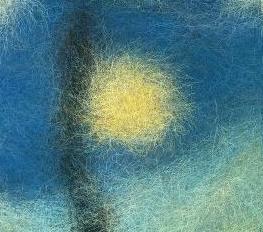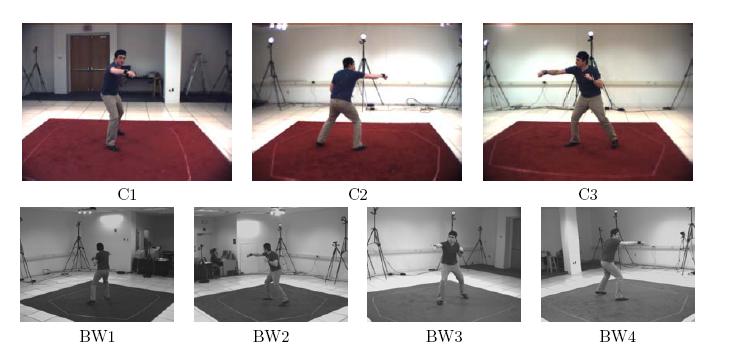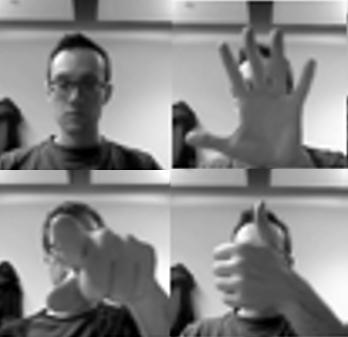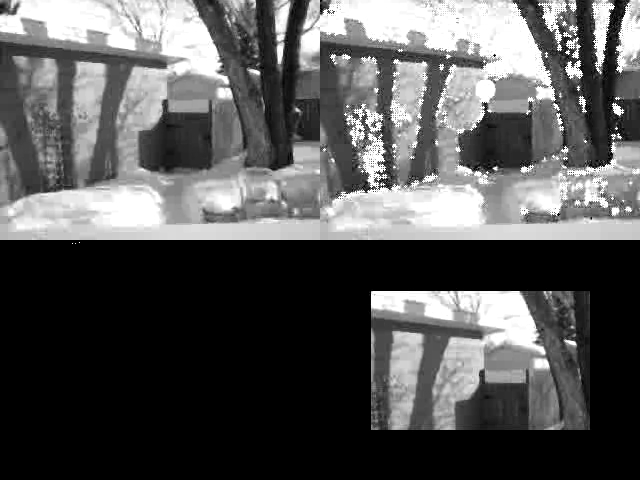 Peter O'Donovan
Peter O'DonovanDynamic Graphics Project
40 St. George Street
Toronto, Ontario
Canada M5S 2E4
[last name without apostrophe]@dgp.toronto.edu
Phone: +1 416 946 8495
Fax: +1 416 978 4765
 Felt-Based Rendering
Felt-Based Rendering
4th International Symposium on Non-Photorealistic
Animation and Rendering (NPAR 2006), Jun. 5 - Jun. 7, 2006. Annecy, France.
Peter O'Donovan and David Mould
Felt is mankind's oldest and simplest textile, composed of a pressed mass of fibers. Images can be formed directly in the fabric by arranging the fibers to represent the image before pressure is applied, a process called "felt painting". Here, we describe an automated synthesis method that transforms input images into felt-painted images.
Paper Animated Felt Test
Using Semantic Web Methods for
Distributed Learner Modeling
2nd International Workshop on Applications of Semantic Web
Technologies for E-Learning (SW-EL 04) held in conjunction with the International Semantic Web
Conference (ISWC 2004), Nov. 7 - Nov. 11, 2004. Hiroshima, Japan
Mike Winter, Chris Brooks, Gord McCalla, Jim Greer, Peter O'Donovan
Here describe a semantic web approach
for representing student models based on
distributed student data from learning environments
where the learner uses multiple applications and resources
to accomplish learning tasks. We also present a proposal
for revising those student models based on
arbitrary, web-based learner actions.
Paper
 Learning View-based Mixture of Experts for Human Action Recognition
Learning View-based Mixture of Experts for Human Action Recognition
CSC2539 (Topics in Computer Vision: Visual Motion Analysis)
Peter O'Donovan
Many methods for action recognition use a view-independent approach
where actions from different views are treated identically. However, this results in
models which must deal with significantly different motions from different views
such as classifying a boxer from a rear view versus a side view. In this paper,
I explore the use of a view-based Mixture of Experts (MoE) model where each
expert is trained on data from a relative view between the camera and the subject.
This allows the experts to model a particular view and results in improved classification rates.
Seperate view and action classifiers were trained using both SVMs and LD-CRF models and the results
compared on the HumanEVA dataset.
 Static Gesture Recognition with Restricted
Boltzmann Machines
Static Gesture Recognition with Restricted
Boltzmann Machines
CSC2515 (Introduction to Machine Learning)
Peter O'Donovan
In this paper I investigate a new technique for the recognition of static gestures
(poses) from laptop camera images. I apply Restricted Boltzmann Machines
(RBMs) to model the manifold of 3 human gestures: pointing, thumbs up, fingers
spread, as well as the default no-gesture case. The generative RBM model
performs significantly better than other classification techniques including classical
discriminative neural networks, and k-Nearest Neighbors on dimensionality
reduced images.
Paper Gesture Examples
 Optical Flow: Techniques and Applications
Optical Flow: Techniques and Applications
Using Optical Flow for Stabilizing Image Sequences
CMPT400 (Honours Thesis Course)
Peter O'Donovan
This thesis was partly a survey of the optical flow literature and partly a project implementing stablization of shaky video sources. Stabilization was accomplished with a simple region segmentation and classification step to determine the background of the sequence. The movement of the background was then filtered with a Kalman filter and translated to stabilize the video.
Paper Video 1 Video 2 Video 3